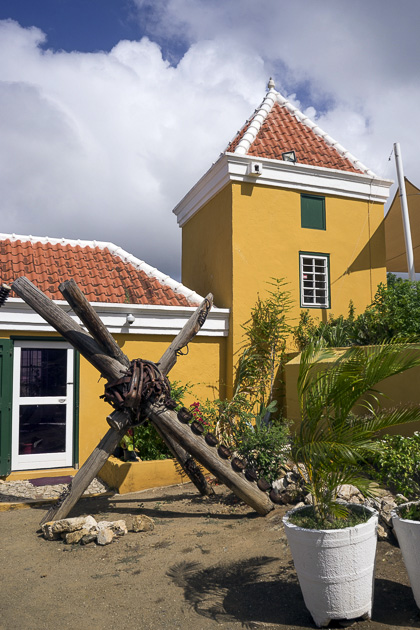The Tula Museum at Landhuis Knip
In the late 18th century, a slave named Tula lived and worked at the Knip Plantation, on the northern tip of the island. Angered by the injustice of his situation, he freed himself and led a revolt across Curaçao. Today, his legacy is remembered in the Tula Museum at the Landhuis Knip.

It’s deeply satisfying that, today, the primary purpose of the Knip Plantation is to pay tribute to a man who was once enslaved here. Sorry Mr. Landowner, I’m sure you considered yourself to be pretty important, and I’m sure that back in the 1700s, you were. But history doesn’t remember your ilk too kindly. There’s nothing to honor you at your former mansion. Instead, it’s dedicated to a man you bought, abused and dehumanized: Tula, the slave who eventually said “enough.”
Inspired by the successful 1791 revolution in Haiti, Tula organized the slaves of the Knip Plantation, then informed the plantation master that they now considered themselves to be free men and women. They marched from Knip to Lagun, freeing more slaves and growing their force along the way. By the time they reached Porto Mari, Tula had a group large enough to be of true concern to the Dutch. And if they weren’t concerned yet, they soon would be. On August 19th, 1975, the Dutch army attacked the rebels and were roundly defeated.

But the rebellion didn’t last much longer than that. Chastened, the Dutch organized a serious response, gave orders to kill any armed slave, and dealt a crushing defeat to the rebels. Tula was among those who escaped, and continued a short-lived guerrilla campaign against the Dutch, until his location was betrayed by a slave. He was captured, and then publicly tortured and executed as an example to any others who might get ideas of independence.
Given the compelling history, the Tula Museum in Landhuis Knip is unfortunately a disappointment. The landhuis is nice, but the exhibits don’t go nearly far enough in telling the story. There are some artifacts and implements from the days of slaving, but not much about Tula nor his revolt. And what little information there is, is only in Dutch. It’s a missed opportunity.
Still, the Tula Museum provides the chance to remember this man who has achieved hero status across Curaçao, and makes for a nice cultural stopover between the nearby beaches of Grote and Kleine Knip. But if you want to learn about Tula, it might be better to hunt down the 2013 film about his struggle, starring Danny Glover.





























